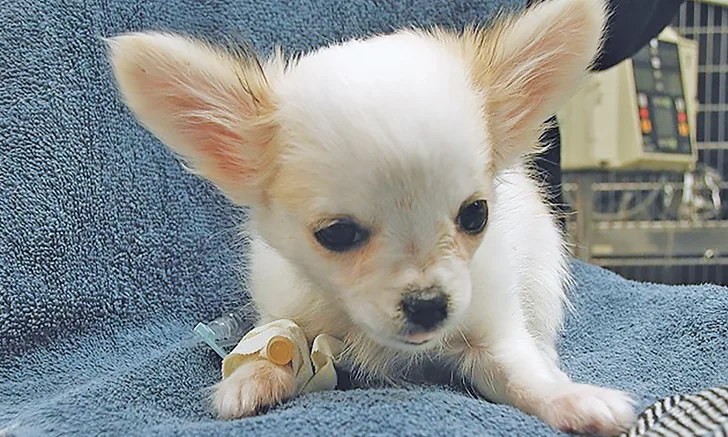This response is incorrect. See below for the correct answer.
Congenital Hydrocephalus
Mark Troxel, DVM, DACVIM (Neurology), Massachusetts Veterinary Referral Hospital, Woburn, Massachusetts

Hydrocephalus is enlargement of the ventricular system resulting from increased CSF production, inadequate CSF drainage, obstruction of CSF outflow, or reduced brain parenchyma volume (eg, age-related brain atrophy, infarction).1,2
Although hydrocephalus can also occur as an acquired disorder, this discussion highlights the congenital form. Congenital hydrocephalus is most often obstructive (ie, noncommunicating). Most cases result from fusion of the rostral colliculi in the midbrain causing obstruction of the mesencephalic aqueduct, with secondary enlargement of the ventricular system rostral to the midbrain.3 Congenital hydrocephalus in cats can be caused by prenatal treatment with griseofulvin4 in queens or intrauterine exposure to feline panleukopenia virus.5
Signalment
Congenital hydrocephalus is most commonly identified in young (2-3 months of age) toy-breed dogs.2,6 The condition is much less common in cats.
Dog breeds commonly affected with congenital hydrocephalus9
Boston Terrier
Cairn Terrier
Chihuahua
English Bulldog
Lhasa Apso
Maltese
Pekingese
Pomeranian
Pug
Toy Poodle
Yorkshire Terrier
Trusted content.
Tailored to you.
For free.
Create an account for free.
Want free access to the #1 publication for diagnostic and treatment information? Create a free account to read full articles and access web-exclusive content on cliniciansbrief.com.